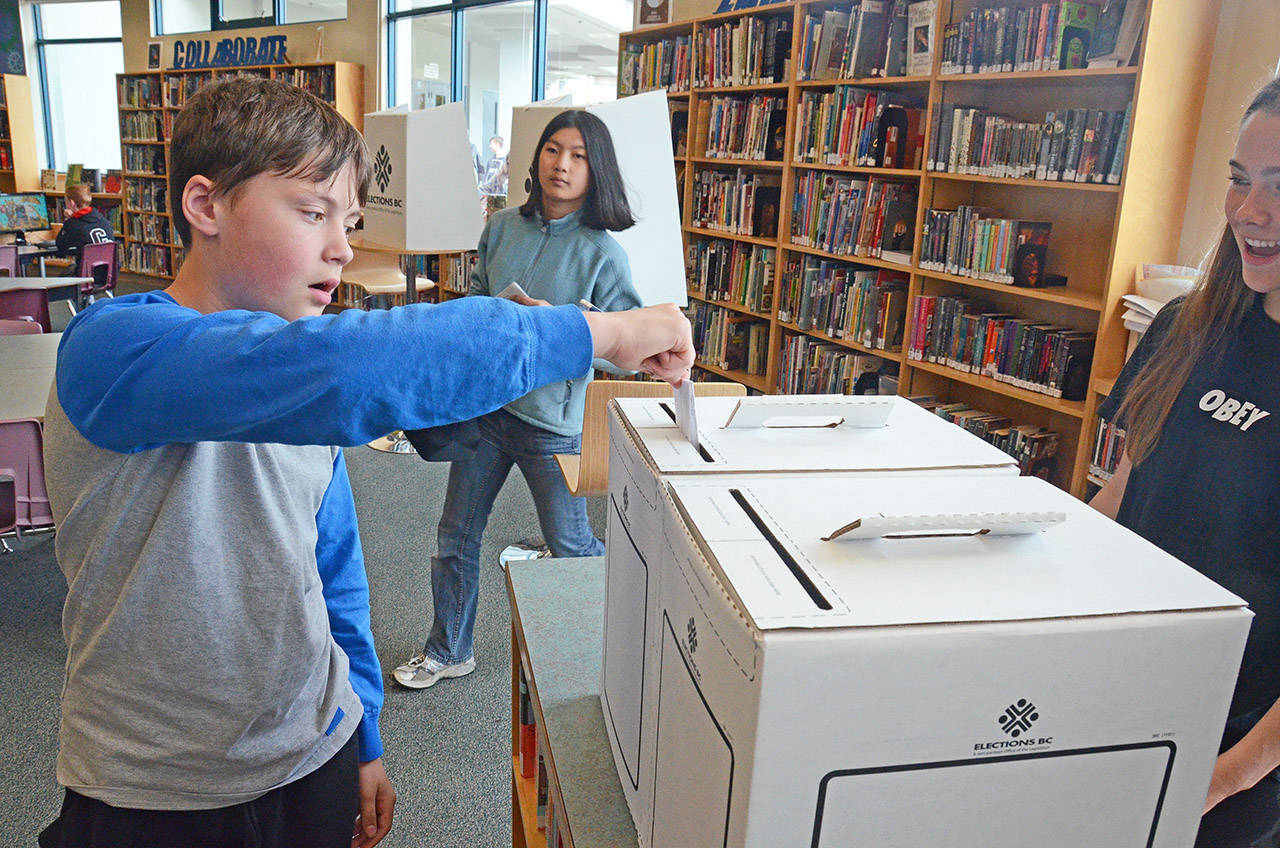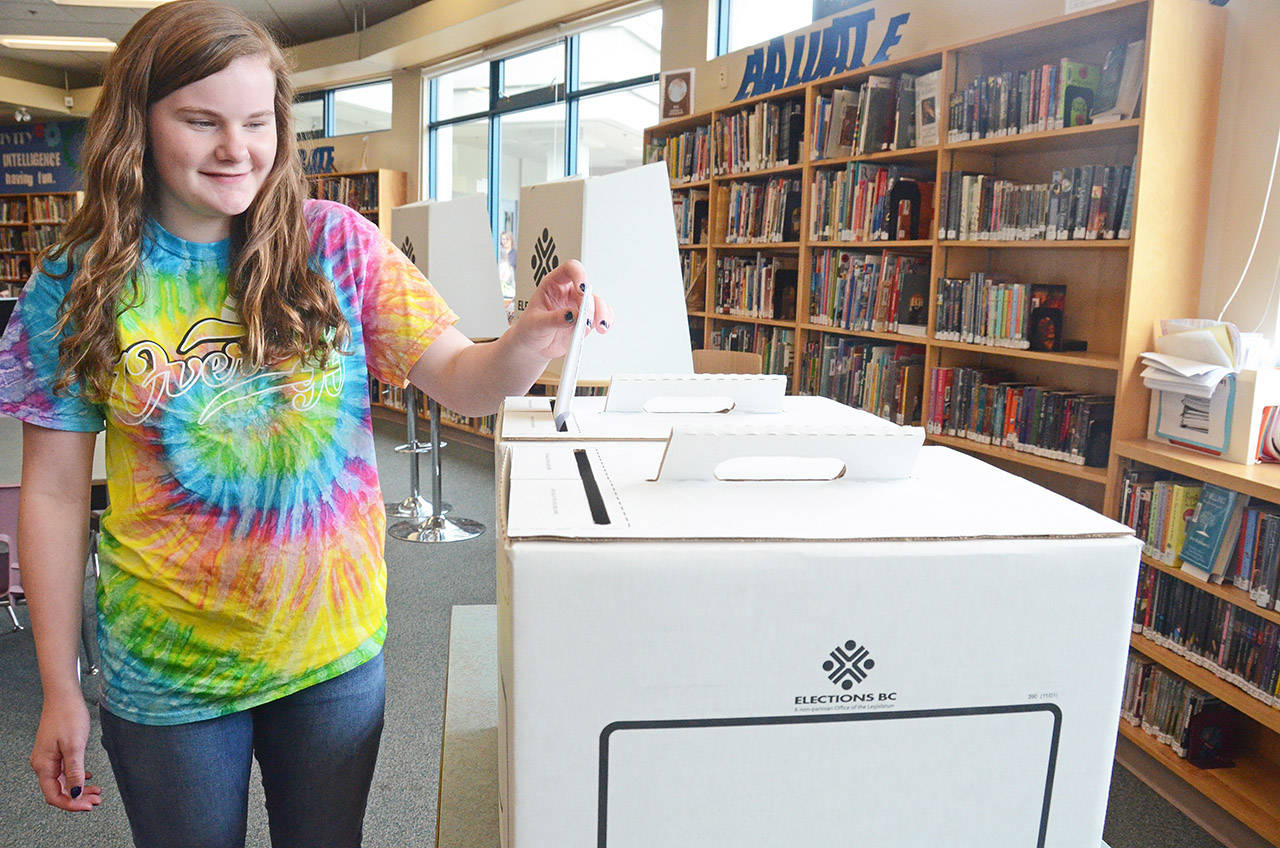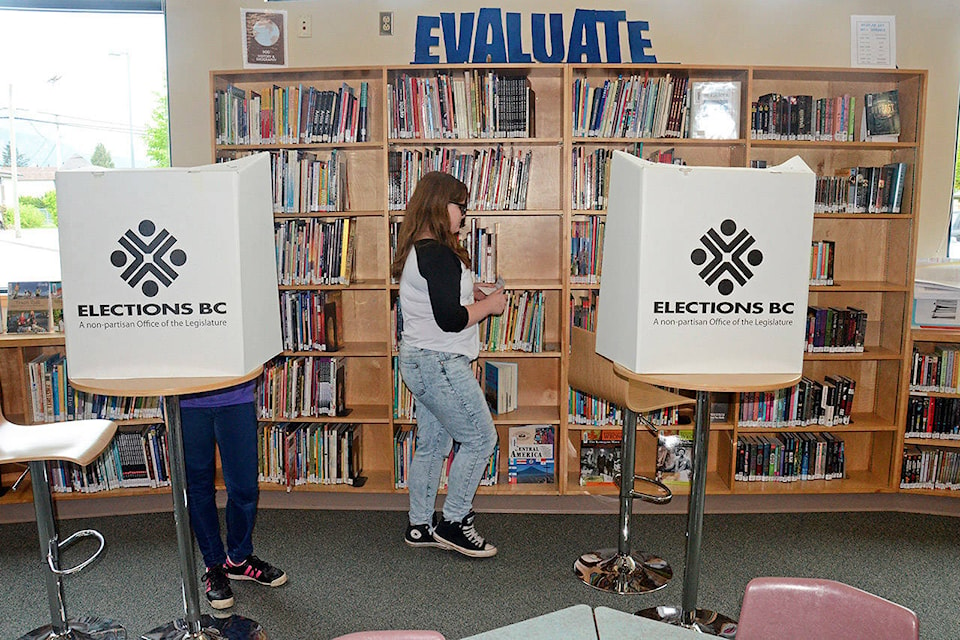Some of the conversation among students in Chilliwack middle school’s library over lunch hour Monday was typical of young teenagers.
Some not so much.
One student was overheard opining to his friends on the best way to kill zombies and witches, while others had provincial politics on their mind.
“Christy Clark is going to win,” said one student.
“I’m voting for anybody but Christy Clark,” said another.
“Vote Green Party,” said yet a third. “They have a good education platform.”
Of course, these under-18-aged students can’t actually vote in the provincial election in B.C., but they are learning about politics and civics and engagement in an election that parallels the real vote May 9.
More than 180,000 elementary and high school students — including those at 25 schools in Chilliwack, three in Agassiz and one in Harrison Hot Springs — cast ballots Monday or last week for the official candidates running in their electoral district. The program is called Student Vote.
“The Student Vote program is a hands-on learning program that enables teachers to bring democracy alive in the classroom, and empowers students to experience the voting process firsthand and practise the habits of active and engaged citizenship,” according to a press release from CIVIX, the non-profit behind Student Vote.
Chilliwack middle school teacher Pedro Zullo said that to further parallel the real election, students are encouraged but not forced to vote. He’s hoping for at least a 57 per cent turnout, which was the real voter turnout in the 2013 provincial election. His sense, however, is that they won’t get it.
“My feeling is students are not as engaged as last time,” Zullo said, referring to the Student Vote conducted at the school for the 2015 federal election.
He said there seems to be less engagement from the media and the public about the 2017 provincial election, which in turn leads to fewer discussions at home with family members and less interest among students. Also, last time there was the Justin Trudeau factor, which sparked interest among younger folks.
The Student Vote program was founded in 2002 with the goal of turning young Canadians into informed and engaged citizens.
Participating schools are supplied with free learning materials and election supplies to help them engage in the campaign and organize a parallel vote. The 2017 British Columbia election Student Vote is conducted in partnership with Elections BC so the students use the exact same ballots, voting booths and ballot boxes that real voters do.
The results of Student Vote will be reported to CIVIX confidentially and shared publicly following the close of the polls at 8 p.m. on May 9.
Local schools participating in Student Vote:
Mount Cheam Christian School
Highroad Academy
Strathcona Elementary School
Mount Slesse Middle School
Chilliwack Central Elementary
Vedder Elementary School
Robertson Elementary School
Unsworth Elementary
Greendale Elementary
Chilliwack Middle School
Bernard Elementary
Yarrow Elementary
Sardis Elementary School
East Chilliwack Elementary
Chilliwack Senior Secondary
A.D. Rundle Middle School
Promontory Heights Community School
Watson Elementary
Vedder Middle School
G.W. Graham Middle/Secondary School
Chance Alternate
Tyson Elementary School
McCammon Traditional Elementary
Education Centre
Evans Elementary
Harrison Hot Springs Elementary
Agassiz Elementary/Secondary School
Agassiz Christian School
Kent Elementary


